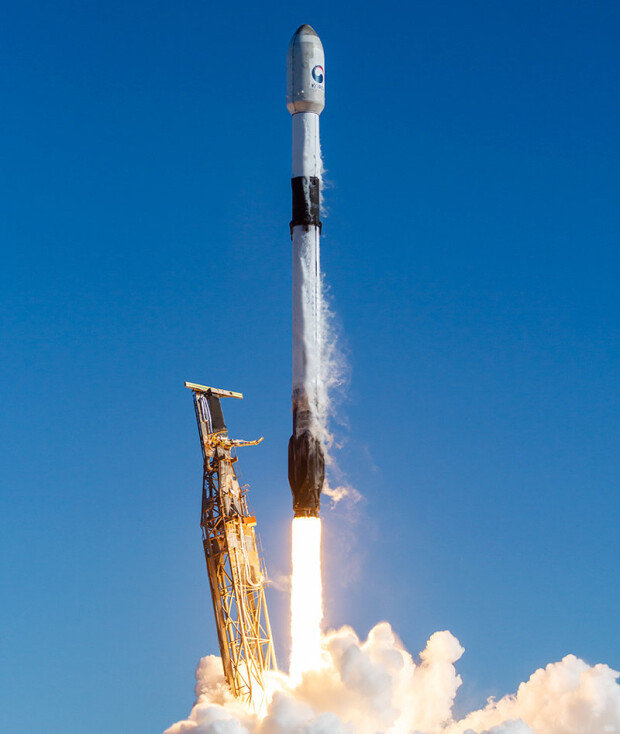Military reconnaissance satellite successfully launches communication
Military reconnaissance satellite successfully launches communication
Posted December. 04, 2023 08:01,
Updated December. 04, 2023 08:01

The South Korean military officially declared the successful operation of the inaugural reconnaissance satellite. Launched from Vandenberg Space Force Base in California, the U.S. in the early morning of Saturday (Korean time), the satellite is now in normal operation, demonstrating successful ground communication following its establishment in orbit. This achievement marks a pivotal milestone in the nation’s pursuit of autonomous space surveillance capabilities, reducing dependence on the U.S. Furthermore, it signifies the commencement of significant deployment of key assets for the kill chain (preemptive strike) strategy against North Korea.
The military reconnaissance satellite was successfully launched aboard SpaceX’s Falcon 9 rocket at approximately 3:19 a.m. on Saturday. Following launch, it underwent the separation from the first-stage propellant and fairing and later from the second-stage propellant around 3:33 a.m., marking 14 minutes post-launch. The satellite successfully entered its designated orbit at an altitude of 500 kilometers. Shortly after that, the initial communication occurred with an overseas (Norwegian) ground station at 4:37 a.m., followed by communication with a domestic ground station at 9:47 a.m. Since these milestones, all satellite functions have been operating flawlessly.
“Our capabilities include the ability to discern individual movements and identify specific vehicle types,” a military spokesperson said. The military is set to launch four additional Synthetic Aperture Radar (SAR) reconnaissance satellites from April next year until 2025. Subsequently, there are plans to deploy five reconnaissance satellites dedicated to monitoring North Korea’s nuclear facilities, missile bases, and mobile launch vehicles (TELs) bi-hourly. The intention is to conduct thorough and intensive surveillance.
Following the ‘Malligyong-1’ launch on Nov. 21, North Korea is anticipated to launch Malligyong-2 and 3 consecutively as per its leader Kim Jong Un’s directive for additional reconnaissance satellites. Notably, there is a potential for North Korea to equip its upcoming satellites with high-resolution optical technology, possibly with support from Russia. Consequently, South Korean and U.S. authorities are closely monitoring these developments. Observers suggest that a ‘space reconnaissance race’ between the two Koreas must have been underway.
Sang-Ho Yun ysh1005@donga.com



![[단독]통일교 윤영호 “신세 지게끔 해야” 여야 정치권 모두 거론](https://dimg.donga.com/c/138/175/90/1/wps/NEWS/IMAGE/2025/12/12/132951638.1.jpg)


![곽규택 ‘또 마이크 끄시게요?’ 스케치북 들자 우원식 헛웃음[청계천 옆 사진관]](https://dimg.donga.com/c/138/175/90/1/wps/NEWS/IMAGE/2025/12/11/132947836.1.jpg)
